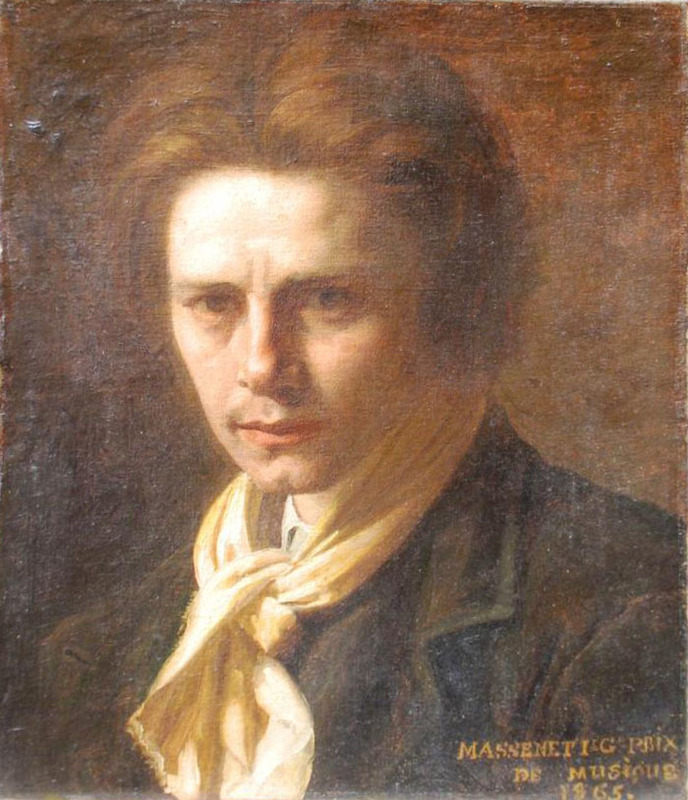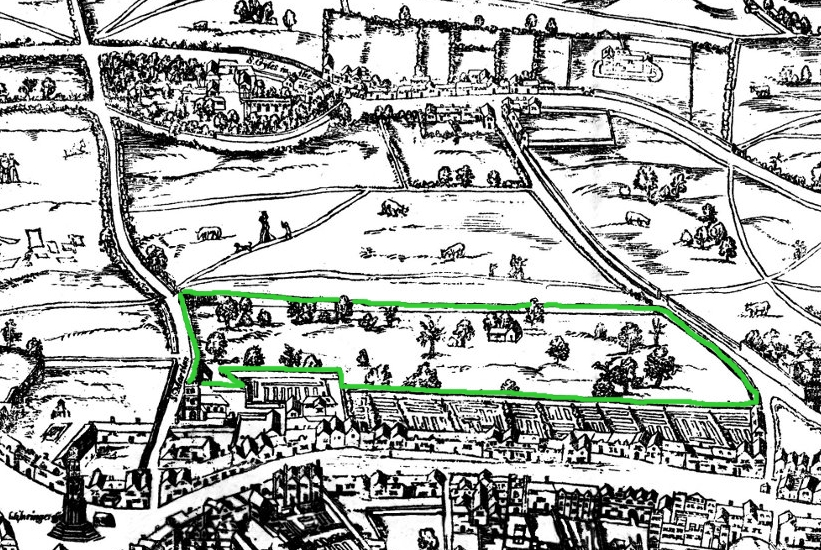|
Le Roi De Lahore
''Le roi de Lahore'' ("The king of Lahore") is an opera in five acts by Jules Massenet to a French libretto by Louis Gallet. It was first performed at the Palais Garnier in Paris on 27 April 1877 in costumes designed by Eugène Lacoste and settings designed by Jean Émile Daran (Act I, scene 1), Auguste Alfred Rubé and Philippe Chaperon (Act I, scene 2; Act V), Louis Chéret (Act II), Jean-Baptiste Lavastre (Act III), Antoine Lavastre and Eugène Louis Carpezat (Act IV). ''Le roi de Lahore'' is the third of Massenet's operas produced in Paris and was his first major success there, spawning performances across Europe and leading to his place as one of the most popular composers of his time. Performance history Within a year of the premiere the opera was performed, for instance, in Turin, Rome, Bologna, and Venice. The Royal Opera House, Covent Garden, presented it in London in 1879, and in 1906 it premiered in Monte Carlo. The US premiere took place in 1883 at the French Opera H ... [...More Info...] [...Related Items...] OR: [Wikipedia] [Google] [Baidu] |
Jules Massenet
Jules Émile Frédéric Massenet (; 12 May 1842 – 13 August 1912) was a French composer of the Romantic era best known for his operas, of which he wrote more than thirty. The two most frequently staged are '' Manon'' (1884) and ''Werther'' (1892). He also composed oratorios, ballets, orchestral works, incidental music, piano pieces, songs and other music. While still a schoolboy, Massenet was admitted to France's principal music college, the Paris Conservatoire. There he studied under Ambroise Thomas, whom he greatly admired. After winning the country's top musical prize, the Prix de Rome, in 1863, he composed prolifically in many genres, but quickly became best known for his operas. Between 1867 and his death forty-five years later he wrote more than forty stage works in a wide variety of styles, from opéra-comique to grand-scale depictions of classical myths, romantic comedies, lyric dramas, as well as oratorios, cantatas and ballets. Massenet had a good sense of the ... [...More Info...] [...Related Items...] OR: [Wikipedia] [Google] [Baidu] |
Covent Garden
Covent Garden is a district in London, on the eastern fringes of the West End, between St Martin's Lane and Drury Lane. It is associated with the former fruit-and-vegetable market in the central square, now a popular shopping and tourist site, and with the Royal Opera House, itself known as "Covent Garden". The district is divided by the main thoroughfare of Long Acre, north of which is given over to independent shops centred on Neal's Yard and Seven Dials, while the south contains the central square with its street performers and most of the historical buildings, theatres and entertainment facilities, including the London Transport Museum and the Theatre Royal, Drury Lane. The area was fields until briefly settled in the 7th century when it became the heart of the Anglo-Saxon trading town of Lundenwic, then abandoned at the end of the 9th century after which it returned to fields. By 1200 part of it had been walled off by the Abbot of Westminster Abbey for use as arable l ... [...More Info...] [...Related Items...] OR: [Wikipedia] [Google] [Baidu] |
Josephine De Reszke
Joséphine de Reszke, in Polish Józefina Reszke (4 June 1855 – 22 February 1891) was a Polish operatic soprano. She and her brothers Jean and Édouard de Reszke learned to sing from their mother Emilja. Josephine also had lessons with Mme. Nissen-Salomon. She made her debut in Paris as Ophelia in ''Hamlet'' on 21 June 1875. She performed in Western Europe. She was with the Paris Opera for several years, during which time she became known for her performances in Italian and French operas. She retired from the stage after she married Baron Leopold Julian Kronenberg, yet she stayed in the arena as a voice teacher. Early years Reske was the daughter of Emilja (also Emilie) Ufniarska (born ca. 1827) and Jan Reszke Emilja was an amateur soprano who had studied under Manuel García II and Pauline Viardot, his sister. She had a clear, powerful voice. She traveled throughout Italy and attended performances by the great masters of the opera. In Warsaw, she performed the role of Desde ... [...More Info...] [...Related Items...] OR: [Wikipedia] [Google] [Baidu] |
Soprano
A soprano () is a type of classical female singing voice and has the highest vocal range of all voice types. The soprano's vocal range (using scientific pitch notation) is from approximately middle C (C4) = 261 Hz to "high A" (A5) = 880 Hz in choral music, or to "soprano C" (C6, two octaves above middle C) = 1046 Hz or higher in operatic music. In four-part chorale style harmony, the soprano takes the highest part, which often encompasses the melody. The soprano voice type is generally divided into the coloratura, soubrette, lyric, spinto, and dramatic soprano. Etymology The word "soprano" comes from the Italian word '' sopra'' (above, over, on top of),"Soprano" '' |
Indra
Indra (; Sanskrit: इन्द्र) is the king of the devas (god-like deities) and Svarga (heaven) in Hindu mythology. He is associated with the sky, lightning, weather, thunder, storms, rains, river flows, and war. volumes/ref> Indra's myths and powers are similar to other Indo-European deities such as Jupiter, Perun, Perkūnas, Zalmoxis, Taranis, Zeus, and Thor, part of the greater Proto-Indo-European mythology. Indra is the most referred deity in the ''Rigveda''. He is celebrated for his powers, and as the one who killed the great evil (a malevolent type of asura) named Vritra, who obstructed human prosperity and happiness. Indra destroys Vritra and his "deceiving forces", and thereby brings rains and sunshine as the saviour of mankind. He is also an important deity worshipped by the Kalash people, indicating his prominence in ancient Hinduism. Indra's significance diminishes in the post-Vedic Indian literature, but he still plays an important role in various m ... [...More Info...] [...Related Items...] OR: [Wikipedia] [Google] [Baidu] |
Édouard Deldevez
Édouard Marie Ernest Deldevez (31 May 1817 – 6 November 1897) was a French violinist, conductor at important Parisian musical institutions, composer, and music teacher. Biography Deldevez was born and died in Paris. He won many prizes as a violinist. He progressed from violinist at the Paris Opera to conductor. He was principal conductor of the Orchestre de la Société des Concerts du Conservatoire from 1872 to 1885. At the Paris Opéra-Comique Deldevez conducted the revival of '' La Fille du Regiment'' (with Marie Cabel) in 1857, ''Rose et Colas'' (first performance at the theatre, as well as 50th performance in 1862), the premiere of '' Lalla-Roukh'' on 12 May 1862, the first production at the Salle Favart of '' La Servante maîtresse'' on 12 August 1862 ( Galli-Marié's debut at the house), runs of '' La dame blanche'' (including the 1,000th performance there in December 1862), '' Le pré aux clercs'', '' Fra Diavolo'' (including the 500th performance in March 1863), and ... [...More Info...] [...Related Items...] OR: [Wikipedia] [Google] [Baidu] |
Marcello Viotti
Marcello Viotti (29 June 195416 February 2005) was a Swiss classical music conductor, best known for opera. Viotti was born in Vallorbe, in the French-speaking region of Switzerland, to Italian parents. He studied cello, piano and singing at the Conservatory of Lausanne. Wolfgang Sawallisch was a mentor to Viotti and encouraged him to begin his career in the theatre. As a young conductor, Viotti honed his craft with the International Orchestra of the Jeunesses Musicales in the Italian town of Fermo, and also with a wind ensemble. His interpretation of Robert Schumann's 4th Symphony helped him win the 1982 Gino Marinuzzi Competition. During the 1980s and 1990s Viotti was a director at several opera houses in Europe. These included three years as artistic director of the Stadttheater in Lucerne, a post as music director of the Turin opera, and three years as Generalmusikdirector of Bremen (1990–1993). He held guest conducting posts at the Vienna State Opera, the Deutsche Oper B ... [...More Info...] [...Related Items...] OR: [Wikipedia] [Google] [Baidu] |
Teatro La Fenice
Teatro La Fenice (, "The Phoenix") is an opera house in Venice, Italy. It is one of "the most famous and renowned landmarks in the history of Italian theatre" and in the history of opera as a whole. Especially in the 19th century, La Fenice became the site of many famous operatic premieres at which the works of several of the four major bel canto era composers – Rossini, Bellini, Donizetti, Verdi – were performed. Its name reflects its role in permitting an opera company to "rise from the ashes" despite losing the use of three theatres to fire, the first in 1774 after the city's leading house was destroyed and rebuilt but not opened until 1792; the second fire came in 1836, but rebuilding was completed within a year. However, the third fire was the result of arson. It destroyed the house in 1996 leaving only the exterior walls, but it was rebuilt and re-opened in November 2004. In order to celebrate this event the tradition of the Venice New Year's Concert started. Histor ... [...More Info...] [...Related Items...] OR: [Wikipedia] [Google] [Baidu] |
San Francisco Opera
San Francisco Opera (SFO) is an American opera company founded in 1923 by Gaetano Merola (1881–1953) based in San Francisco, California. History Gaetano Merola (1923–1953) Merola's road to prominence in the Bay Area began in 1906 when he first visited the city. In 1909, he returned as the conductor of the International Opera Company of Montreal, one of the many visiting troupes that frequented the bustling city. Continued visits for the next decade convinced him that a San Francisco company was viable. In 1921, Merola returned to live in the city under the patronage of Mrs. Oliver Stine. During this time, Merola conceived of branching away from the area's reliance on visiting troupes for entertainment that had been common place since the Gold Rush era. By the fall, he was planning his first season, and the very next year, Merola organized a trial season at Stanford University. The first performance occurred in the Stanford Cardinal's football stadium on June 3rd, 1922 wi ... [...More Info...] [...Related Items...] OR: [Wikipedia] [Google] [Baidu] |
Richard Bonynge
Richard Alan Bonynge ( ) (born 29 September 1930) is an Australian conductor and pianist. He is the widower of Australian dramatic coloratura soprano Dame Joan Sutherland. Bonynge conducted virtually all of Sutherland's operatic performances from 1962 until her retirement in 1990. Biography Bonynge was born in Epping, a suburb of Sydney, and educated at Sydney Boys' High School before studying piano at the Sydney Conservatorium of Music and gaining a scholarship to the Royal College of Music in London, where his piano teacher was Herbert Fryer. He gave up his music scholarship, continuing his private piano studies, and became a coach for singers. One of these was Joan Sutherland, whom he had accompanied in Australia. They married in 1954 and became a duo, performing operatic recitals until 1962. When the scheduled conductor for a recital of operatic arias became ill and the replacement conductor was involved in a car accident, Bonynge stepped in and, from that time on, he c ... [...More Info...] [...Related Items...] OR: [Wikipedia] [Google] [Baidu] |



.jpg)
_-_Facade.jpg)
